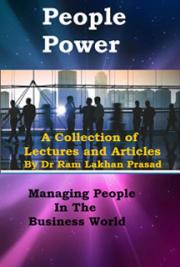For obtaining a good
black colour to it.
For whitening and
bleaching it.
For renewing it.
[180]
For clearing the skin of the face from
eruptions that break out and leave black spots upon it.
For removing the
black colour of the epidermis.
For enlarging the
breasts of women.
For raising and
hardening pendulous breasts.
For giving a
fragrance to the skin.
For removing the evil
savour of perspiration.
For anointing the
body after bathing.
For causing a
pleasant smell to the breath.
Drugs and charms for
the purposes of fascinating, overcoming, and subduing either men or women.
Recipes for enabling
a woman to attract and preserve her husband's love.
Magical collyriums
for winning love and friendship.
Prescriptions for
reducing other persons to submission.
Philter pills, and
other charms.
Fascinating incense,
or fumigation.
Magical verses which
have the power of fascination.
Of the one hundred and thirty recipes given, many of
them are absurd, but not more perhaps than many of the recipes and
prescriptions in use in Europe not so very long ago. Love-philters, charms, and
herbal remedies have been, in early days, as freely used in Europe as in Asia,
and doubtless some people believe in them still in many places.
And now, one word about the author of the work, the
good old sage Vatsyayana. It is much to be regretted that nothing can be
discovered about his life, his belongings, and his surroundings. At the end of
Part vii.
he states that he wrote the work while leading the life of a religious student
[probably at Benares] and while wholly engaged in the contemplation of the
Deity. He must have arrived at a certain age at that time, for throughout he
gives us the benefit of his experience, and of his opinions, and these bear the
stamp of age rather than of youth; indeed the work could hardly have been
written by a young man.
In a beautiful verse of the Vedas of the Christians it
has been said of the peaceful dead, that they rest from their labours, and that
their works do follow them. Yes indeed, the works of men of genius do follow them,
and remain as a
[181]
lasting treasure. And though there may be disputes and
discussions about the immortality of the body or the soul, nobody can deny the
immortality of genius, which ever remains as a bright and guiding star to the
struggling humanities of succeeding ages. This work, then, which has stood the
test of centuries, has placed Vatsyayana among the immortals, and on This, and
on Him no better elegy or eulogy can be written than the following lines:
"So long as lips shall kiss, and eyes shall see,
So
long lives This, and This gives life to Thee."
FOOTNOTES:
[1]
Dharma is acquisition of religious merit, and is fully
described in Chapter 5, Volume III., of Talboys Wheeler's 'History of India,'
and in the edicts of Asoka.
[2]
Artha is acquisition of wealth and property, etc.
[3]
Kama is love, pleasure and sensual gratification.
These three words are retained throughout in their
original, as technical terms. They may also be defined as virtue, wealth and
pleasure, the three things repeatedly spoken of in the Laws of Manu.
[4]
These were certainly materialists who seemed to think
that a bird in the hand was worth two in the bush.
[5]
Among the Hindoos the four classes of men are the
Brahmans or priestly class, the Kshutrya or warlike class, the Vaishya or
agricultural and mercantile class, and the Shoodra or menial class. The four
stages of life are, the life of a religious student, the life of a householder,
the life of a hermit, and the life of a Sunyasi or devotee.
[6]
Bali was a demon who had conquered Indra and gained
his throne, but was afterwards overcome by Vishnu at the time of his fifth
incarnation.
[7]
Dandakya is said to have abducted from the forest the
daughter of a Brahman, named Bhargava, and being cursed by the Brahman, was
buried with his kingdom under a shower of dust. The place was called after his
name the Dandaka forest, celebrated in the Ramayana, but now unknown.
[8]
Ahalya was the wife of the sage Gautama. Indra caused
her to believe that he was Gautama, and thus enjoyed her. He was cursed by Gautama
and subsequently afflicted with a thousand ulcers on his body.
[9]
Kichaka was the brother-in-law of King Virata, with
whom the Pandavas had taken refuge for one year. Kichaka was killed by Bhima,
who assumed the disguise of Draupadi. For this story the Mahabarata should be
referred to.
[10]
The story of Ravana is told in the Ramayana, which
with the Mahabarata form the two great epic poems of the Hindoos; the latter
was written by Vyasa, and the former by Valmiki.
[11]
The author wishes to prove that a great many things
are done by people from practice and custom, without their being acquainted
with the reason of things, or the laws on which they are based, and this is
perfectly true.
[12]
The proviso of being married applies to all the
teachers.
[13]
This term would appear to apply generally to an
inhabitant of Hindoostan. It is not meant only for a dweller in a city, like
the Latin Urbanus as opposed to Rusticus.
[14]
Gift is peculiar to a Brahman, conquest to a Kshatrya,
while purchase, deposit, and other means of acquiring wealth belongs to the
Vaishya.
[15]
Natural garden flowers.
[16]
Such as quails, partridges, parrots, starlings,
&c.
[17]
The calls of nature always performed by the Hindoos
the first thing in the morning.
[18]
A colour made from lac.
[19]
This would act instead of soap, which was not
introduced until the rule of the Mahomedans.
[20]
Ten days are allowed when the hair is taken out with a
pair of pincers.
[21]
These are characters generally introduced in the
Hindoo drama; their characteristics will be explained further on.
[22]
Noonday sleep is only allowed in summer, when the
nights are short.
[23]
These are very common in all parts of India.
[24]
In the 'Asiatic Miscellany,' and in Sir W. Jones's
works, will be found a spirited hymn addressed to this goddess, who is adored
as the patroness of the fine arts, especially of music and rhetoric, as the
inventress of the Sanscrit language, &c., &c. She is the goddess of
harmony, eloquence, and language, and is somewhat analogous to Minerva. For
further information about her, see Edward Moor's 'Hindoo Pantheon.'
[25]
The public women, or courtesans (Vesya), of the early
Hindoos have often been compared with the Hetera of the Greeks. The subject is
dealt with at some length in H. H. Wilson's 'Select Specimens of the Theatre of
the Hindoos,' in two volumes, Trubner & Co., 1871. It may be fairly
considered that the courtesan was one of the elements, and an important element
too, of early Hindoo society, and that her education and intellect were both
superior to that of the women of the household. Wilson says, "By the Vesya
or courtesan, however, we are not to understand a female who has disregarded
the obligation of law or the precepts of virtue, but a character reared by a
state of manners unfriendly to the admission of wedded females into society, and
opening it only at the expense of reputation to women who were trained for
association with men by personal and mental acquirements to which the matron
was a stranger."
[26]
According to this description a Pithamarda would be a
sort of professor of all the arts, and as such received as the friend and
confidant of the citizens.
[27]
A seat in the form of the letter T.
[28]
The Vita is supposed to represent somewhat the
character of the Parasite of the Greek comedy. It is possible that he was
retained about the person of the wealthy and dissipated as a kind of private
instructor, as well as an entertaining companion.
[29]
Vidushaka is evidently the buffoon and jester. Wilson
says of him that he is the humble companion, not the servant, of a prince or
man of rank, and it is a curious peculiarity that he is always a Brahman. He
bears more affinity to Sancho Panza, perhaps, than any other character in
western fiction, imitating
him in his combination of shrewdness and simplicity, his fondness of good
living and his love of ease. In the dramas of intrigue he exhibits some of the
talents of Mercury, but with less activity and ingenuity, and occasionally
suffers by his interference. According to the technical definition of his
attributes he is to excite mirth by being ridiculous in person, age, and
attire.
[30]
This means, it is presumed, that the citizen should be
acquainted with several languages. The middle part of this paragraph might
apply to the Nihilists and Fenians of the day, or to secret societies. It was perhaps
a reference to the Thugs.
[31]
This term does not apply to a widow, but to a woman
who had probably left her husband, and is living with some other person as a married
woman, maritalement, as they say in France.
[32]
Any woman fit to be enjoyed without sin. The object of
the enjoyment of women is twofold, viz., pleasure and progeny. Any woman who
can be enjoyed without sin for the purpose of accomplishing either the one or
the other of these two objects is a Nayika. The fourth kind of Nayika which
Vatsya admits further on is neither enjoyed for pleasure or for progeny, but
merely for accomplishing some special purpose in hand. The word Nayika is
retained as a technical term throughout.
[33]
High unions are said to be better than low ones, for
in the former it is possible for the male to satisfy his own passion without
injuring the female, while in the latter it is difficult for the female to be
satisfied by any means.
[34]
The strength of passion with women varies a great
deal, some being easily satisfied, and others eager and willing to go on for a
long time. To satisfy these last thoroughly a man must have recourse to art. It
is certain that a fluid flows from the woman in larger or smaller quantities,
but her satisfaction is not complete until she has experienced the "spasme
génêsique," as described in a French work recently published and called
"Breviare de l'Amour Experimental par le Dr. Jules Guyot."
[35]
This is a long dissertation very common among Sanscrit
authors, both when writing and talking socially. They start certain
propositions, and then argue for and against them. What it is presumed the
author means, is, that though both men and women derive pleasure from the act
of coition, the way it is produced is brought about by different means, each
individual performing his own work in the matter, irrespective of the other,
and each deriving individually their own consciousness of pleasure from the act
they perform. There is a difference in the work that each does, and a
difference in the consciousness of pleasure that each has, but no difference in
the pleasure they feel, for each feels that pleasure to a greater or lesser
degree.
[36]
This paragraph should be particularly noted, for it
specially applies to married men and their wives. So many men utterly ignore
the feelings of the women, and never pay the slightest attention to the passion
of the latter. To understand the subject thoroughly, it is absolutely necessary
to study it, and then a person will know that, as dough is prepared for baking,
so must a woman be prepared for sexual intercourse, if she is to derive
satisfaction from it.
[37]
From this it would appear that in ancient times the
breasts of women were not covered, and this is seen in the painting of the
Ajunta and other caves, where we find that the breasts of even royal ladies and
others are exposed.
[38]
Men who are well acquainted with the art of love are
well aware how often one woman differs from another in her sighs and sounds
during the time of congress. Some women like to be talked to in the most loving
way, others in the most abusive way, and so on. Some women enjoy themselves
with closed eyes in silence, others make a great noise over it, and some almost
faint away. The great art is to ascertain what gives them the greatest
pleasure, and what specialities they like best.
[39]
This practice appears to have been prevalent in some
parts of India from a very ancient time. The "Shushruta," a work on
medicine some two thousand years old, describes the wounding of the lingam with
the teeth as one of the causes of a disease treated upon in that work. Traces
of the practice are found as far back as the eighth century, for various kinds
of the Auparishtaka are represented in the sculptures of many Shaiva temples at
Bhuvaneshwara, near Cuttack, in Orissa, and which were built about that period.
From these sculptures being found in such places, it would seem that this
practice was popular in that part of the country at that time. It does not seem
to be so prevalent now in Hindustan, its place perhaps is filled up by the
practice of sodomy, introduced since the Mahomedan period.
[40]
The fresh juice of the cocoa nut tree, the date tree,
and other kinds of palm trees are drunk in India. It will not keep fresh very
long, but ferments rapidly, and is then distilled into liquor.
[41]
The characteristics of these three individuals have
been given in Part I. page 31.
[42]
A definition of the sixty-four parts, or divisions, is
given in Chapter II., page 45.
[43]
The flight of a blue jay on a person's left side is
considered a lucky omen when one starts on any business; the appearance of a
cat before anyone at such a time is looked on as a bad omen. There are many omens
of the same kind.
[44]
Such as the throbbing of the right eye of men and the
left eye of women, etc.
[45]
Before anything is begun it is a custom to go early in
the morning to a neighbour's house, and overhear the first words that may be
spoken in his family, and according as the words heard are of good or bad
import, so draw an inference as to the success or failure of the undertaking.
[46]
A disease consisting of any glandular enlargement in
any part of the body.
[47]
A woman, the palms of whose hands and the soles of
whose feet are always perspiring.
[48]
These last few lines have been exemplified in many
ways in many novels of this century.
[49]
There is a good deal of truth in the last few
observations. Woman is a monogamous
animal, and loves but one, and likes to feel herself alone in the affections of
one man, and cannot bear rivals. It may also be taken as a general rule that
women either married to, or kept by, rich men love them for their wealth, but
not for themselves.
[50]
These forms of marriage differ from the four kinds of
marriage mentioned in Chapter I., and are only to be made use of when the
girl is gained over in the way mentioned in Chapters III. and IV.
[51]
About this, see a story on the fatal effects of love
at page 114 of "Early Ideas; a Group of Hindoo Stories," collected
and collated by Anaryan. W. H. Allen and Co., London, 1881.
[52]
About the Gandharvavivaha form of marriage, see note
to page 28 of Captain R. F. Burton's "Vickram and the Vampire; or Tales of
Hindu Devilry." Longman, Green & Co., London, 1870. This form of
matrimony was recognised by the ancient Hindus, and is freq







